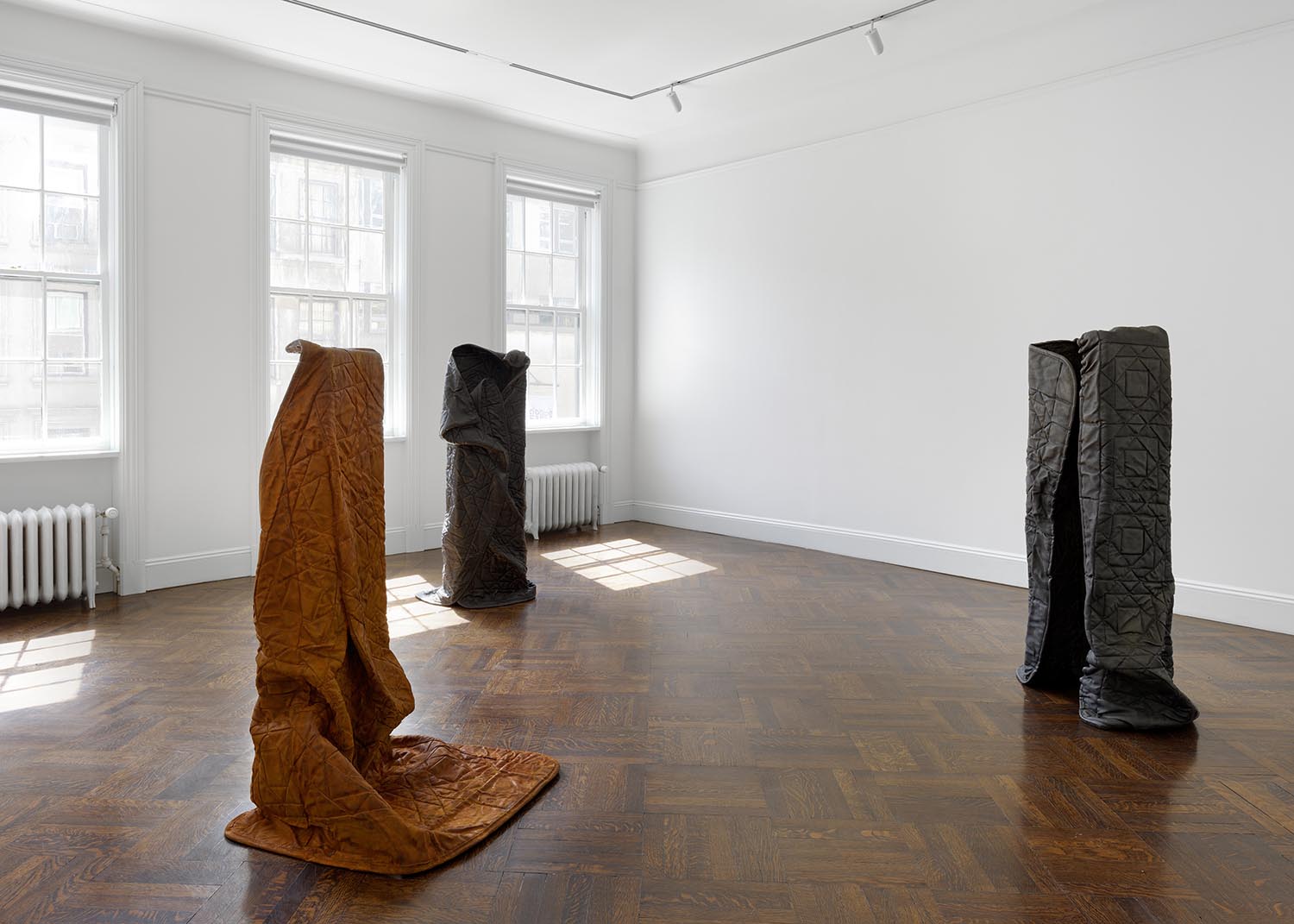Upon entering the group exhibition “Between the Waters” at the Whitney Museum of American Art in New York, curated by Elisabeth Sherman and Margaret Kross, the first thing one sees is Cy Gavin’s The Future of Tucker’s Point (2016), a large landscape painting in lurid yellows, oranges, fluorescent pinks, and notes of Caribbean blue.
Made with oil, acrylic, and chalk on canvas, the landscape plays host to a black male nude. Centrally located, the nude sits facing sunny skies with toes dangling in water, his eyes closed in ecstasy. Half covered by a cloak of black fur or some other luxuriant material, the drapery elegantly adumbrates the ever-lurking probability of a shadow of the Veil à la W.E.B. Du Bois. He also appears blessed against the odds, unperturbed by a total lack of racial anxiety. Beach, tidal ponds, rock outcroppings, and palm trees hotly surround him, complementing his nakedness with an acid glow. Since the painting’s title claims to present a scene from “the future,” it makes sense to suggest that what we see here is an eventual return to paradise. By way of reversal, Masaccio’s fifteenth-century fresco Expulsion from the Garden of Eden comes to mind, in which Adam and Eve are shown exiting paradise in states of pronounced agony.

Gavin’s work sometimes recalls Renaissance portrayals of the nude, except for two major distinctions: that Gavin is alive for the secular twenty-first century, and that all of his characters are black. He’s a sensitive minder of history, in ways specific to his Afro-Caribbean American lineage as well as to the complicated, canonical mantle inherited by any figurative painter finding his way in the West.
His figures and landscapes volunteer themselves for our allegorical consideration, just like the nudes and pastorals of former regimes. Unlike these past examples, however, Gavin’s are done in psychotropic color schemes and are often titled to identify icons of slave-trade-era Bermuda lore: the ancestral homeland of Gavin’s father’s family.
Tucker’s Point happens to be a resort town on the island that Gavin visits once or twice a year, a place that leaves him with two or three mixed feelings. Gavin told me that he posed for The Future of Tucker’s Point himself, and so I can’t help but interpret it as a euphoric vision of the artist enjoying a climate of rapture, located in days to come at the site of his ancestors’ prolonged and horrific subjugation under slavery as well as their first introduction to America.
Expanding on W.H. Auden’s notion that art is perhaps best understood when one prioritizes a search for Edenic pleasure, Dave Hickey writes: “Our Edens reside in a world that we can touch, that sings in our ears and shines before our eyes — the only world that we can inhabit while living in our bodies with all our senses intact.” And so I am reminded of microcosmic Bermuda, a real-life island off the coast of North America, held in the hands, ears, and eyes of Gavin, where I believe he has sensed what paradise has been possible, thwarted, and yet may again be attainable, even only if briefly, despite the tremendous powers that be and those that have been.

Full disclosure: Cy is one of my closest friends and we talk about art, either his or mine, constantly. Somehow, however, I think I am able to bring an appropriate measure of criticality to bear on his work. I think this because of what Auden says about writers or artists writing critically about work that they love: “So long as a man writes poetry or fiction, his dream of Eden is his own business, but the moment he starts writing criticism, honesty demands that he describe it to his readers, so that they may be in the position to judge his judgments.” So, honesty demands that I describe the dreamlike satisfaction of knowing Cy’s work, regardless or because of the fact that I enjoy the pleasure of his company. Here goes. I think he’s an artist nourished by the act and sensation of painting, in touch with the land from whence he came, viewing what he’s become since then or there and responding in kind, unsentimental, blissful in spite of it all. The locations cited in his work as landscapes set themselves up as apparatuses whereupon he can enact the experiential thrills of applying wild color, texture, depth, and perspective, all while meditating on the historical significance or folkloric meaning of a specific site in the natural world. More essentially, Cy’s project comes down to a poetic exploration of idiosyncratic mark-making on variable surfaces, subdued and/or roused by figures comporting themselves as flirtatious avatars of a rich legacy, shaded by human misery, and yet reimagined with joy.


